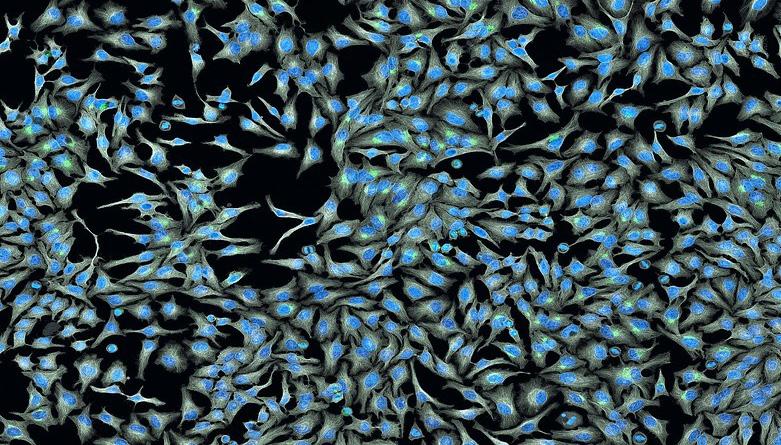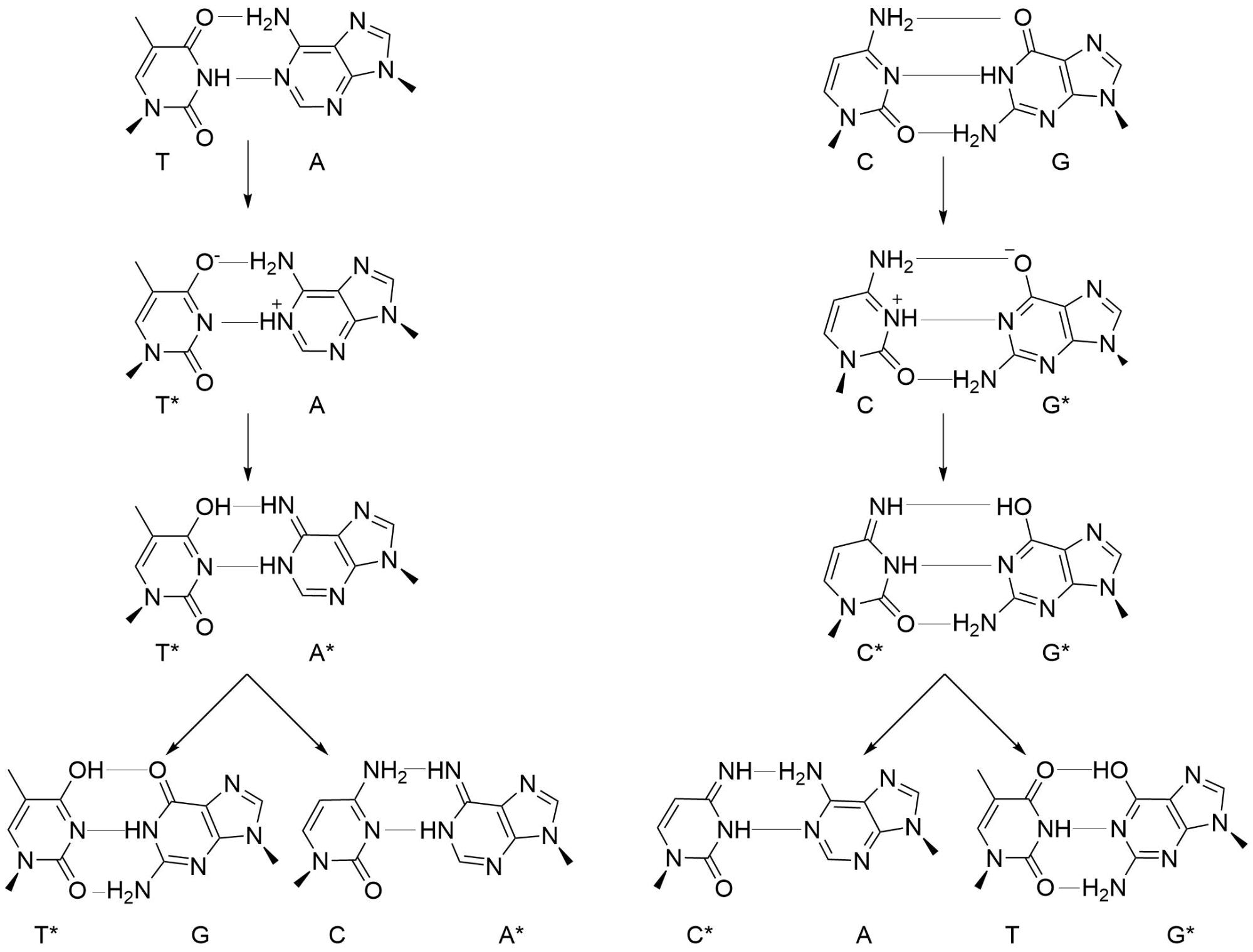
8 minute read
A Quantum Mechanical Approach to Understanding DNA Mutations Michelle Yang
From the unfortunate passing of cancer patient Henrietta Lacks came the discovery that the cells from her cervical tumor were extremely robust and could be easily kept alive in culture. These cells, known as HeLa cells, have helped scientists test cancer treatments, formulate various vaccines, create imaging techniques, and much more, but also have brought about pressing questions. 1,2 Despite frequent genetic mutations that would cause ordinary cell lines to quickly die, how are some HeLa cells mutation-free? What triggers mutations in cells, and more importantly, can such mutations be prevented? The key to answering these questions lies in understanding DNA, the code for life, a pattern of nucleotides unique to every living creature that results in the broad diversity of traits we see in life today. Changing even a single nucleotide in an organism’s code could shift a cell’s fate onto an unfortunate path, or give an organism a useful trait. Since DNA’s discovery in the late 1860s, the reasons for why and how DNA evolves over time were thought to be the key to linking the
Advertisement
BY MICHELLE YANG
macroscopic observation of evolution with molecular and cell biology. Starting in the mid-1900s, Per-Olov Löwdin, often hailed as a founding father of quantum chemistry, began to offer a quantum mechanical approach to some of the mysteries behind genetic mutations, helping to inspire the field of quantum biology and breakthroughs in DNA research that brings us closer than ever to solving the mysteries of DNA mutations and manipulating the genetic code.
WHAT IS QUANTUM TUNNELING? Although several scientists in the early 1900s like Albert Einstein, Max Planck, and Erwin Shrödinger had formally rewritten the laws of physics to explain the wave-particle behavior of small-scale systems and subatomic particles, microbiology and biochemistry had not advanced far enough to truly understand how these concepts applied to biological systems. Such an understanding wasn’t prominent until the mid-1900s, when Löwdin and other scientists started applying these concepts to chemical and biological systems. Löwdin specifically employed the concept of quantum tunneling, which explains how the wave-like properties of small particles allow them to pass through higher energy barriers that classically would block normal objects. 2 In both classical and quantum systems, an object’s position and momentum are governed by its surroundings, more precisely named “potential” in quantum settings. Classically, during a roller coaster ride, a cart goes faster when going downhill and slower when going uphill. By the law of energy conservation, if a cart does not have enough kinetic energy to overcome the potential energy “hill” created by a tall stretch of track, it will roll back down. In quantum systems, however, the wave-like properties of subatomic particles mean that protons behave in ways not explained by classical physics. Unlike a roller coaster cart, which has a clearly known position and momentum at any given moment, protons are basically waves with mass, meaning they

Figure 1: Model for hydrogen bonding. A proton inside a hydrogen bond (modeled by the wave function) is bounded by an asymmetric double well potential. Initially it sits in the lowest well, but after some time, the probability of the proton going through the barrier increases, and the proton will transfer to the other side. When this transfer happens, bonds between atoms can change, shown by the diagram above each graph.
have no exact position or momentum. Due to their wave-like properties, protons can “tunnel” through certain steep hills or high potential barriers that would otherwise prevent a classical particle from moving past. 3,4 Higher and wider potential barriers (i.e a higher activation energy for proton events to occur) are more difficult for protons to bypass, and thus the timing and probability of a tunneling event depend on the barrier, the energy of the particle, and outside perturbations that could affect the system. 3,4,5,6 A particularly useful application of particle tunneling theory is in hydrogen bonding, where a proton sits inside a potential well (Fig. 1). 5,6 Due to the unique structures of DNA nucleotides, favorable
hydrogen bonding only occurs between complementary base pairs, just like how distinctly shaped puzzle pieces only fit with matching pieces. Adenosine nucleotides will only bind to thymine nucleotides, while cytosines will only bind to guanines.
LÖWDIN’S HYPOTHESIS: PROTON TUNNELING IS A POSSIBLE REASON FOR CHANGES IN THE GENETIC CODE
By combining the role of hydrogen bonding in DNA with the quantum mechanical view of hydrogen bonding, Löwdin suggested a chemical mechanism and quantitative approach to estimate how and how often a spontaneous mutation in DNA could occur. 4,5 When a proton involved in hydrogen bonding between two nucleotides undergoes tunneling, the event triggers another proton tunneling event in the reverse direction, modifying the shape of both nucleotides. If this change is permanent, then during replication, the two altered nucleotides bind to mismatched pairs, introducing a permanent change to the genetic code (Fig. 2). Löwdin went even further to propose that as
a consequence of time evolution, these tunneling events happen more and more frequently as we age, meaning spontaneous mutations are more likely to occur, affecting our body’s health and ability to function. 4,5
MODERN TECHNIQUES AND A PROMISING FUTURE
Using calculations based on quantum mechanics behind these proton shifts, researchers now are mapping out mutation “hot spots,” locations in DNA more susceptible to proton tunneling. By plotting these hot spots on a mutation spectrum, scientists can determine how DNA hot spots are distributed and investigate what differentiates these locations from other parts of the genome. 8 To generate this data, researchers calculated the potential barrier for each pairing, which requires information on how the arrangement of base pairs affect the height and width of such a barrier. Locations with low potential barriers often mark these mutation hot spots, giving scientists more information on how the pattern of base pairs and location within a chromosome affects the likelihood of genetic mutation. 7,8 Luckily, the potential barrier for a proton to tunnel through is high and wide enough such that spontaneous mutation without changes in the chemical environment is a rare occurrence; current calculations estimate one in a billion to a trillion base pairs ever spontaneously changes. 9,10 Still, the accumulation of proton tunneling events throughout our lifetimes represents changes to our genetic code, which more often than not, are harmful rather than helpful. The risk for cancer increases as humans age, and could serve as further evidence for Löwdin’s belief that proton tunneling events increase as time progresses. 4,5 Furthermore, outside forces like radiation, exposure to UV light, and other chemicals can increase the chance for a proton tunneling event to occur, either by exciting the

proton to a higher energy level, lowering the potential barrier, or perturbing the surroundings in some other fashion. Critically, these mutations may ultimately trigger cancerous cell growth. 5
While the mysteries behind the code that governs almost all lifeforms may seem unending, perhaps there will be a day when our understanding of genetic mutations based on the fields of quantum and computational biology will allow us to fully understand and even manipulate mutation-causing mechanisms.
Figure 2: Molecular diagram for proton transfers and impact on replication. Starting from the top left, normal T-A nucleobase pairing is shown. After a proton tunneling event (on T nitrogen to A nitrogen), another proton transfer is triggered (from top nitrogen of A to T*), resulting in two changed nucleobase structures that have different complementary base pairing than before. After replication, T* binds to G, and A* binds to C, permanently altering the genetic code. Right side shows proton tunneling mechanism for C-G pairing.
1. Zhang, Y., Li, Y., Li, T., Shen, X., Zhu, T., Tao, Y., ... & Liu, J. (2019). Genetic load and potential mutational meltdown in cancer cell populations. Molecular biology and evolution, 36(3), 541-552. 2. Molecular Biology and Evolution (Oxford University Press). (2019, January 15). Why haven’t cancer cells undergone genetic meltdowns?. ScienceDaily. Retrieved November 11, 2019 from www.sciencedaily.com/releases/2019/01/190115174257.htm 3. Griffiths, D. J. (2005). Introduction to quantum mechanics. Upper Saddle River, NJ: Pearson Prentice Hall. 4. Löwdin, P. O. (1963). Proton tunneling in DNA and its biological implications. Reviews of Modern Physics, 35(3), 724. 5. Löwdin, P. O. (1966). Quantum genetics and the aperiodic solid: Some aspects on the biological problems of heredity, mutations, aging, and tumors in view of the quantum theory of the DNA molecule. In Advances in quantum chemistry (Vol. 2, pp. 213-360). Academic Press. 6. Weiner, J. H., & Tse, S. T. (1981). Tunneling in asymmetric double‐well potentials. The Journal of Chemical Physics, 74(4), 2419-2426. 7. Rogozin, I. B., & Pavlov, Y. I. (2003). Theoretical analysis of mutation hotspots and their DNA sequence context specificity. Mutation Research/ Reviews in Mutation Research, 544(1), 65-85. 8. Šponer, J., & Lankaš, F. (Eds.). (2006). Computational Studies of RNA and DNA (Vol. 2). Springer Science & Business Media. 9. Kryachko, E. S., & Sabin, J. R. (2003). Quantum chemical study of the hydrogen‐bonded patterns in A· T base pair of DNA: Origins of tautomeric mispairs, base flipping, and Watson–Crick Hoogsteen conversion. International journal of quantum chemistry, 91(6), 695-710. 10. Douhal, A., Kim, S. K., & Zewail, A. H. (1995). Femtosecond molecular dynamics of tautomerization in model base pairs. Nature, 378(6554), 260.
IMAGE SOURCES
1. Deerink, T. (2017). Retrieved from https://www.flickr.com/photos/nihgov/34948768633 2. Quapan. (2017). non-covalent hydrogen bonds betwixt base pairs of the DNA-Double-Helix visualized through an electron microscope. Retrieved from https://www.flickr.com/photos/ hinkelstone/33255693331. 3. Edwards, Brown, Spink, Skelly, & Neidle. (n.d.). Molecular structure of the B-DNA dodecamer d(CGCAAATTTGCG)2. An examination of propeller twist and minor-groove water structure at 2.2 A resolution. Retrieved from https://www.rcsb.org/ structure/1D65.










